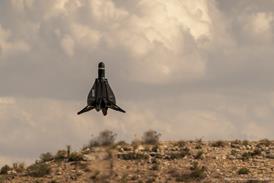Aerion is evaluating preliminary results of a new global market survey that forecasts a 10-year market for about 300 supersonic jets.
The study, conducted by market research company Alden & Associates, is the first by Aerion in five years and was undertaken as part of the US aeronautical engineering company's ongoing dialogue with potential manufacturing partners.
"The preliminary data validates our business assumptions," says Aerion vice-chairman Brian Barents. "Considering the effects of the global economic downturn on purchasing psychology, these results, coupled with our current backlog, demonstrate the strong desire for supersonic transportation."
Barents suggests "it was time to take a fresh look at the potential for the Aerion supersonic jet, taking into account the globalisation of the business jet market". The Asian market, he says, "was barely considered in our last study five years ago. Today, the region is a major source of demand for long-range jets."
While Aerion continues its discussions with OEMs, the Reno, Nevada-based engineering company is also pursuing tests to gather more data on its supersonic natural laminar flow design. This is the enabling technology that allows the Aerion jet to provide efficient transport at speeds from Mach 0.95 to its maximum cruise speed of M1.6. Supersonic natural laminar flow was demonstrated in flight tests with NASA in 2000 and 2006 and more recently in transonic windtunnel tests.
Aerion says it is planning a new series of flight tests in conjunction with NASA Dryden Flight Research Center, and will use, as before, a NASA Boeing F-15B as a test platform.
The objective of the new flight-test series is to collect data from an aerofoil section larger than the one tested previously, says Aerion. Earlier tests confirmed robust supersonic laminar flow on a small aerofoil section. The new flight-test wing model will allow the collection of data at high Reynolds numbers much closer to a full-scale Aerion wing at cruise altitude. The new wing model will also allow Aerion to assess the required manufacturing tolerances to assure robust laminar flow, says Aerion.
Aerion chief technology officer Richard Tracy says "we continue to see a validation" of the company's computational fluid dynamics models and supersonic laminar flow prediction capability in flight and windtunnel tests.
"This provides high confidence in our design and performance, and allows us to begin turning our efforts to refinement of required manufacturing tolerances," he adds. "We are therefore very pleased with the progress of the testing programme."
Source: Flight International























